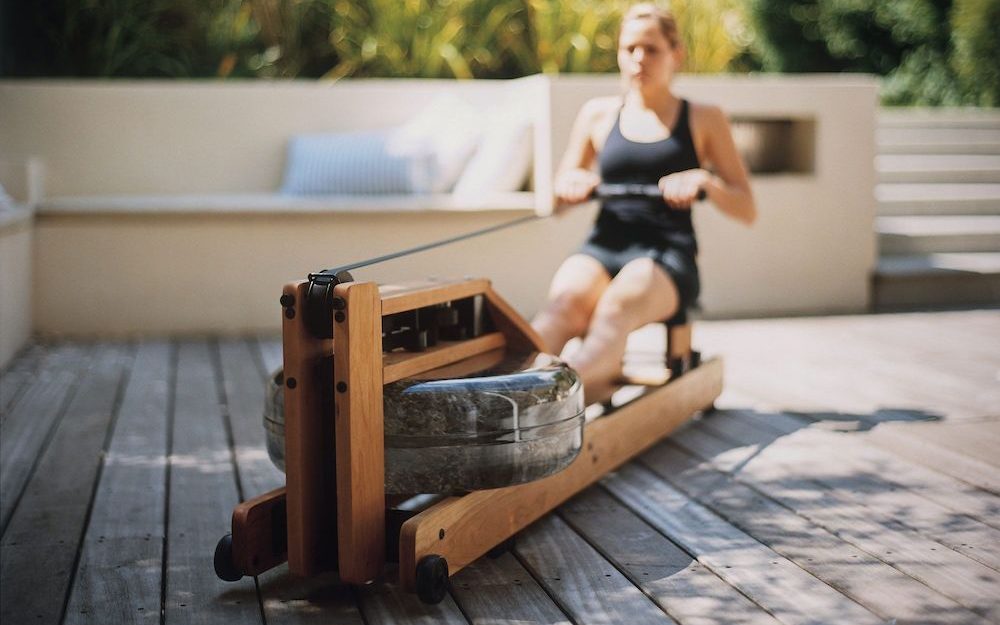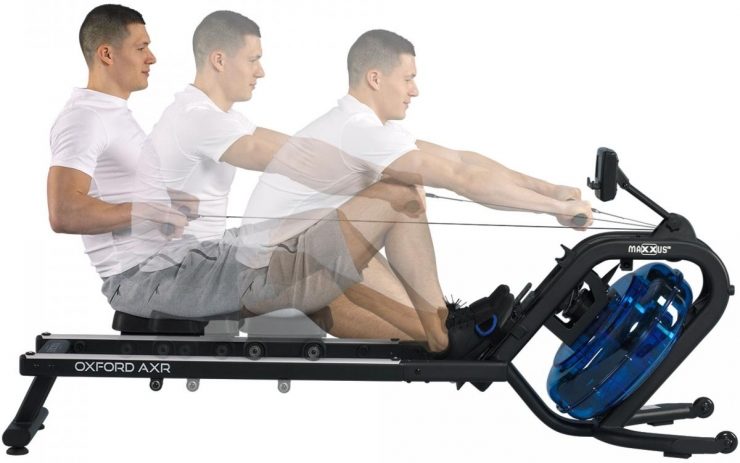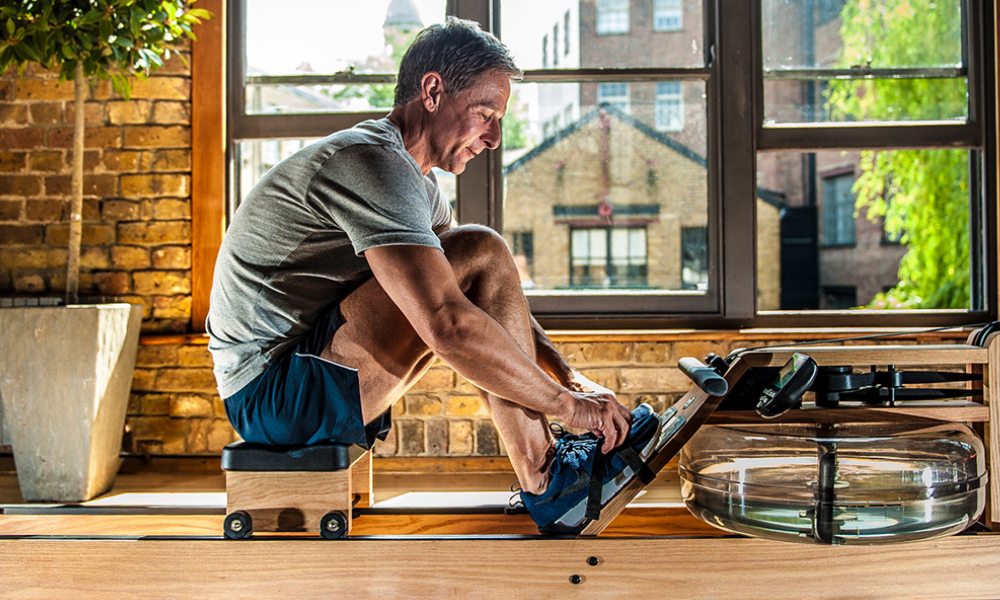Welcome, dear readers! As a personal trainer, rehab expert, and fitness enthusiast, I’ve seen firsthand the transformative power of regular exercise, especially for our vibrant senior community.
Today, I want to talk about a piece of fitness equipment that’s been making waves (pun intended) in the fitness world – the rowing machine.
Rowing machines offer a fantastic way for seniors to stay active, healthy, and strong. But like any exercise equipment, it’s crucial to use them safely to reap their full benefits. So, let’s dive in, shall we?
Understanding Rowing Machines: A Journey of a Thousand Strokes

Before we get into the nitty-gritty of safety, let’s take a moment to understand what a rowing machine is and how it works.
A rowing machine, also known as an ergometer, simulates the action of watercraft rowing. It’s a full-body workout machine that engages your arms, legs, and core, all in one fluid motion. You pull on a handle attached to a chain, strap, or handlebar, which is connected to a flywheel at the front of the machine. As you pull back, the flywheel provides resistance, and as you release, the flywheel spins down. It’s like rowing a boat, but you’re on dry land!
There are different types of rowing machines out there, each with their unique features. Some use air or water to create resistance, while others use magnetic or hydraulic resistance. For seniors, I recommend machines with adjustable resistance, comfortable seating, and easy-to-read digital displays. These features allow you to customize your workout to your fitness level and monitor your progress easily.
Benefits of Rowing Machines for Seniors: Row, Row, Row Your Boat to Health
Now that we understand what a rowing machine is let’s explore why it’s a fantastic choice for seniors.
- Cardiovascular Benefits: Rowing is an excellent aerobic exercise. It gets your heart pumping and your lungs working, improving your cardiovascular health. Regular rowing can help lower blood pressure, improve heart function, and reduce the risk of heart disease.
- Strength and Endurance Benefits: Rowing is a full-body workout. It engages major muscle groups, including your legs, arms, and core. Regular rowing can help improve muscle strength and endurance, making daily activities easier.
- Low Impact Nature: Unlike running or some other forms of exercise, rowing is low impact. It’s gentle on the joints, making it a great option for seniors who may have arthritis or other joint issues.
If you are still hesitating if the ergometer is right for you, check out our comprehensive guide on the benefits of rowing machines for seniors.
In the next section, we’ll delve into the precautions and safety tips you need to keep in mind before, during, and after your rowing workout.
Precautions Before Starting a Rowing Workout: Ready, Set, Row!
Before you jump on the rowing machine and start pulling, there are a few things you need to consider.
Consult with a Healthcare Provider:
This is a crucial first step, especially for seniors. Your doctor or physical therapist can assess your fitness level and advise you on the appropriate intensity and duration of your workouts. They can also highlight any specific concerns related to your health condition.
Understanding Personal Fitness Level:
It’s essential to have a realistic understanding of your current fitness level. Starting with too high intensity can lead to injuries and discourage you from continuing your fitness journey. Remember, it’s not a race; it’s about consistent progress.
Importance of a Proper Warm-Up:
A good warm-up prepares your body for the workout ahead. It increases your heart rate, warms up your muscles, and improves flexibility, reducing the risk of injuries. A simple warm-up can include light cardio, like a brisk walk, followed by some dynamic stretches.
Safety Tips While Using Rowing Machines: Rowing with Care
Now that you’re warmed up and ready to go, let’s talk about how to use the rowing machine safely.
Correct Rowing Technique and Posture
Good technique is crucial in rowing. It not only makes your workout more effective but also reduces the risk of injuries.

- Maintaining a Straight Back:
As you row, keep your back straight and avoid hunching your shoulders. This will help prevent back strain. - Proper Hand and Foot Positioning:
Hold the handle with an overhand grip and keep your wrists flat. Your feet should be securely strapped in the footplates, with the strap across the widest part of your foot.
Setting Appropriate Resistance Levels
Start with a lower resistance level and gradually increase it as your strength and endurance improve. Higher resistance isn’t always better; it’s more important to maintain good form.
Gradual Progression in Workout Intensity
Increase the intensity of your workouts gradually. This could mean rowing for a longer time, increasing the resistance, or rowing more quickly. Remember, slow and steady wins the race!
Listening to Your Body and Knowing When to Stop
This is perhaps the most important tip. If you feel pain, dizziness, or extreme fatigue, it’s time to stop. It’s normal to feel a bit out of breath and to have tired muscles, but discomfort is a sign that something isn’t right.
In the next section, we’ll discuss what to do after your workout to ensure you recover well and are ready for your next rowing session. Keep rowing, my friends!
Post-Workout Safety Tips: The Perfect Finish to Your Rowing Session

Congratulations! You’ve completed your rowing workout. But before you head off to celebrate, there are a few post-workout steps that are just as important as the workout itself.
Importance of Cooling Down
Just as you warmed up before your workout, it’s essential to cool down afterward. A cool-down gradually lowers your heart rate and helps your body transition from an active state to a resting one. A simple cool-down can include a few minutes of slow rowing followed by walking.
Stretching Exercises to Prevent Muscle Stiffness
Stretching after your workout can help prevent muscle stiffness and improve flexibility. Focus on stretching the major muscle groups you used during your workout – your legs, arms, and back. Remember to hold each stretch for at least 30 seconds and to breathe deeply and relax as you stretch.
Hydration and Nutrition Considerations
After your workout, it’s important to rehydrate and refuel. Drink plenty of water to replace the fluids you lost through sweating. Also, have a balanced meal or snack that includes protein to help repair and build muscles, and carbohydrates to replenish energy stores.
Choosing the Right Rowing Machine for Seniors: Your Trusty Fitness Companion
Choosing the right rowing machine can make your workouts more enjoyable and effective. Here are some factors to consider:
Comfort
Look for a rowing machine with a comfortable, padded seat and handles. This can make a big difference, especially in longer workouts.
Adjustability
An adjustable resistance is a must. This allows you to start at a lower resistance and gradually increase it as your strength and endurance improve.
Ease of Use
Look for a rowing machine with a clear, easy-to-read display. It should show basic workout data like time, distance, and stroke rate. Also, consider how easy it is to get on and off the machine.
Size and Storage
Consider the size of the machine and whether it fits comfortably in your workout space. Some rowing machines can be folded up for storage, which is a great feature if you’re short on space.
Durability
A well-built, durable machine will be safer and last longer. It might be worth investing a bit more upfront for a machine that will stand up to regular use.
As for specific rowing machines, the Concept2 Model D is a popular choice due to its durability, ease of use, and adjustable resistance. The Stamina Body Trac Glider 1050 is also a good option for those on a budget or with limited space. It’s compact, affordable, and has adjustable hydraulic resistance.
Conclusion: Rowing Towards a Healthier, Happier You
We’ve covered a lot of ground today, from the benefits of rowing machines for seniors to safety tips and how to choose the right machine. Remember, the key to safe and effective workouts is to listen to your body, maintain proper form, and progress at your own pace.
Rowing is a fantastic way for seniors to stay active, improve cardiovascular health, and build strength and endurance. But the most important thing is to enjoy your workouts. So, find a rowing machine you love, put on your favorite music or podcast, and start rowing your way to health and happiness.
Remember, age is just a number. It’s never too late to start your fitness journey. So, get out there and start rowing, my friends! You’re stronger than you think.
